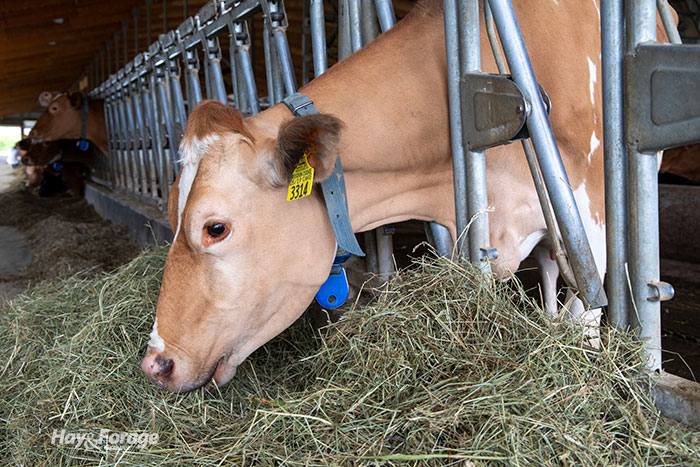
There is a fine line between too much starch and not enough energy in dairy rations for fresh cows. As cows’ energy demands shoot skyward during the transition period, less forage fiber may be included in the diet in favor of higher starch concentrations.
Fresh cows often experience negative energy balance (NEB) when their energy demands exceed energy intake at the beginning of lactation. Although a high-starch diet can combat NEB, less forage fiber may heighten the risk of subacute ruminal acidosis in some animals. In a recent issue of the Farm Report newsletter from the Miner Agricultural Research Institute, Emily Bourdeau reminds readers that dairy rations are not one-size-fits-all.
“Cows undergo metabolic and physiological changes leading up to calving and when lactation begins,” she writes. “Providing a single ration for fresh cows can be difficult when cows’ metabolic needs vary postcalving.”
To ensure fresh cows maintain proper rumen function, researchers at the University of Alberta evaluated whether offering animals free-choice hay would allow them to meet their energy demands while mitigating the risk of acidosis. They conducted a study in which 20 cows were offered timothy hay in addition to a total mixed ration (TMR) for the first five days in milk. Another group of 12 cows were given the TMR without hay.
“Providing free-choice hay can allow certain cows to increase their forage neutral detergent fiber (NDF) intake, if they need it, while other cows can continue consuming a high-starch diet that supports high milk production.” Bourdeau explains.
After five days in milk, the researchers stopped offering hay to the first group of cattle and all cows received only the TMR until 21 days in milk. Results show the animals that initially had access to dry hay had lower concentrations of serum haptoglobin, which suggested they were less likely to develop disease.
“Haptoglobin is a serum inflammatory biomarker and will be nearly zero for a healthy cow but elevated at calving regardless of health status,” Bourdeau states. “High haptoglobin concentrations, or larger increases in concentrations, have been positively associated with the occurrence of health problems.”
There was no significant difference in milk yield, rumination, body weight, or body composition between the two groups of cows. Cows in the treatment group had lower TMR intakes at the beginning of the study, but consuming hay helped them achieve similar total dry matter intakes (DMI) as their counterparts during the first five days in milk. Although these animals had lower DMI compared to the control group for the rest of the experiment, they were more feed efficient overall.
“It is important to keep in mind that feed efficiency looks different throughout the lactation,” Bourdeau asserts. “For example, fresh cows may have a higher feed efficiency ratio than mid-lactation cows, but the fresh cows are more feed efficient because they are mobilizing more body reserves rather than consuming TMR, which may end up causing problems down the road.”
Despite this, offering fresh cows free-choice hay can ultimately create more flexibility in the diet. While the long-term effects are unclear from the study, feeding dry hay may be a possible solution for preventing acidosis and keeping cows healthy during the transition period.

